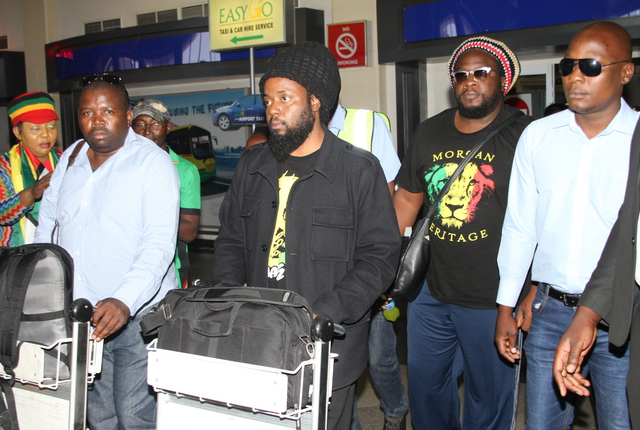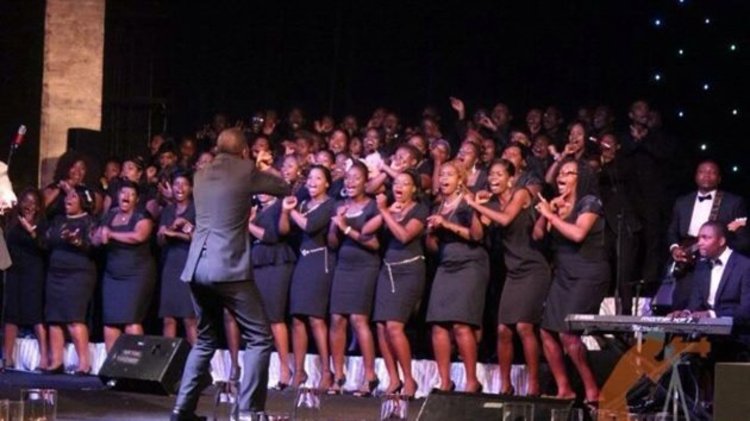Retracing history of Zim visual arts

The National Gallery of Zimbabwe is currently running exhibitions curated from the Gallery’s Permanent Collection. The exhibitions offer an in-depth amount of knowledge in terms of the growth and development of art history in Zimbabwe and the world from its earliest stages to present day. Such a display provides a great chance for people, especially the young generation, to gain knowledge and understanding of the past, and through it the present and possibly the future.
It offers Zimbabwean history through art as well as insight into Western art history through the presentation of distinguished works of art from the eighteenth and the nineteenth century. Because art reflects major ideas, issues, values, institutions and individual concerns of societies, Art History can help us gain an understanding of the individual and cultural identity throughout history from around the world as individuals and as a nation.
As well as historical knowledge, the National Gallery of Zimbabwe provides the young generation with lessons they can apply in their lives today.
The collection is filled with artefacts of human history that is in-painting, sculpture and print making. The running exhibitions include work from the early artists meeting point: African and European Masters in Conversation, Pfumvudza/ Intwasa: Revisiting Zimbabwean Rituals and Ceremonies in the 21st Century; Arthur Azevedo’s Perspective: Homage to the Master Draftsman of Weld Art and Jazzified: Expressions of Protest and Zimbabwe Contemporary Art. These artists used different cutting age mediums. Over and over they depicted social and domestic life in their art works.
In the main Gallery, the Courtauld Gallery, is the Meeting point: African and European Masters in Conversation Exhibition. This exhibition is an opportunity to celebrate the work and contribution by our founding patron Sir Stephen Courtauld.
This collection provides the viewer with a glimpse of the National Gallery’s Permanent Collection and at the same time creates a conservation of two continents across different generations.
The National Gallery of Zimbabwe is a meeting point of culture. On display are works by some of Africa’s greatest modernist painters Kingsley Sambo and Selby Mvusi, and from the European masters the artists include, Giovanni Caraccaiollo, Jose Jusepe de Ribera, Agostino Tassi and many more.
Azevedo’s The Perspective: Homageto the Master Draftsman of Weld Art showcases such key sculptures as the “Cock”, the “Bishop” and “Dog” the “Cow” which are Azevedo’s best known works acquired by the National Gallery of Zimbabwe. The sculptures were acquired by this Gallery in the years 1969, 1964, 1981 and 1994 respectively. The artist’s rich and expansive practice is represented by the type of material used in his work; the scrap metal pieces. The exhibition fills the Foyer Precinct which is a spacious and welcoming zone to our family of art lovers.
Azevedo is one of Zimbabwe’s most important renowned Zimbabwean artists as well as an outstanding master sculptor in Metal and the pioneer modernist in this movement in Zimbabwe.
He is attributed with founding the scrap metal sculpture movement many years ago. Situated in the South East Gallery is the Jazzified: Expressions of Protest exhibition which is about the celebration of the music that shaped the history of urban Zimbabweans. Township Music has its roots in the struggle of the poor, black arts movement and the Black Nationalist movements.
Africans were exposed to American and South African Jazz through township loud speakers, gramophone, radio and the bioscope, and were able to transform the European tradition of composition while assimilating some of its elements.
One outstanding artwork on display is the Inspiration from a Bass Player by Marvellous Mangena, which is a post-independence celebration providing a reflection on the tremendous role played by jazz music in the struggle by black people for socio-political and economic independence from colonialism in Zimbabwe and Africa as a whole.
Also on display is a painting by Thomas Mukarobgwa one of the early workshop painters nostalgically titled Inyanga which shows a yearning for things far beyond the everyday. BoiraMuteki’s apocalyptic After the Waris in bold colours and looks at the lack of gains by Africans after the Second World War- stripped bare of apologies.
In the PG Gallery from the south corridor to the west corridor is the Zimbabwe Contemporary Art exhibition. The works on display respond to different contexts. The artworks in these exhibition draw from life experience and human emotion as the inspiration of the creative force and a history of people.
The works showcased make us wonder what the future holds and investigate how our emotions are triggered when interacting with them, prompting a larger conversation that asks viewers to consider that art often achieves its fullest value with viewers’ approach from multiple angles.
The Zimbabwean Contemporary art scene has become very much alive with the likes of Tapfuma Gutsa, MisheckMasamvu, Virginia Chihota, Portia Zvavahera, Masimba Hwati, Rashid Jogee and Gareth Nyandoro exhibiting their works locally, regionally and internationally.
The MMCZ Gallery also has an exhibition that brings together a number of Zimbabwean artefacts that will link us with the past. Pfumvudza/ Intwasa: Revisiting Zimbabwean Rituals and Ceremonies in the 21st Century Exhibition seeks to raise awareness as to why they are important and why they are disappearing.
This exhibition is here to take you to the past that is still relevant today. Makate, maturi, misumo, svimbo, ngoma,mataru, zvabwazvefodya, tsero, mitsago, mbira nehosho are not just objects to entertain but they are objects of mediation as well as objects to use for rituals and ceremonies.
The public at large is encouraged to visit the National Gallery of Zimbabwe, to view one of the prominent distinguish artists on display. To make the whole experience of viewing the exhibitions of some of the best works of art in the gallery’s permanent collection interesting and convenient, the gallery’s education department has devised Family maps and a Children’s workbook.
The family map is a Gallery guide which offer directions to the visitor of all the galleries and exhibitions that are currently running. The map also offers adventure to kids as it has interesting questions that the kids should answer. The children’s book for primary school kids also has information and questions about the running exhibitions.








Comments